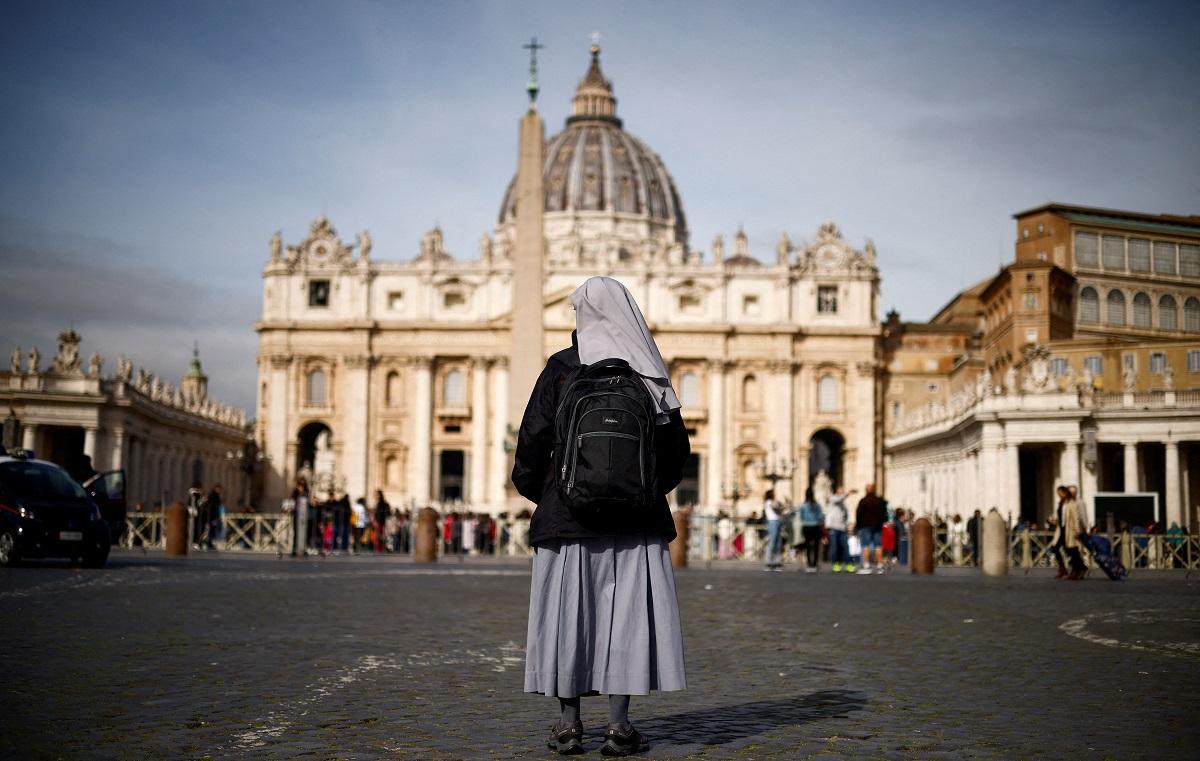How does one become a saint?
The path to becoming a saint has begun for 13-year-old Niña Ruiz-Abad after the Vatican gave its permission to stand an inquiry into her possible sainthood. It comes 30 years after her death in August 1933 due to hypertrophic cardiomyopathy. Abad, who was only 13 then, was laid to rest at a public cemetery in Sarrat, […]


The path to becoming a saint has begun for 13-year-old Niña Ruiz-Abad after the Vatican gave its permission to stand an inquiry into her possible sainthood.
It comes 30 years after her death in August 1933 due to hypertrophic cardiomyopathy. Abad, who was only 13 then, was laid to rest at a public cemetery in Sarrat, Ilocos Norte.
The beatification and canonization process for Abad will begin in April at the Saint William’s Cathedral in Laoag.
If Abad acquires the title of Saint, she will be one of the youngest and the only Filipino female saint.
However, there’s still a long process and verification as required by the Catholic Church.
The three stages to sainthood, according to the United States Conference of Catholic Bishops are the following:
Stage I: Wait for five years after death, and the investigation will begin
Five years must pass from the time of a candidate’s death before a cause may begin to allow greater balance and objectivity in evaluating the case and to let the emotions of the moment dissipate. The pope, however, can dispense from this waiting period.
The candidate must first become “Venerable,” a title given to a deceased person recognized formally by the Pope as having lived a heroically virtuous life or offered their life.
In Phase I of examining the life of the candidate, the bishop of the diocese or eparchy in which the person died is responsible for beginning the investigation.
The petitioner will then ask the bishop, through a person known as the postulator, to open the investigation and a series of consultations with the episcopal conference, the faithful of his diocese or eparchy, and the Holy See will begin.
Once these consultations are done and he has received the ‘nihil obstat’ of the Holy See, he forms a diocesan or eparchial tribunal, which will then investigate the candidate’s martyrdom or how the candidate lived a life of heroic virtues, that is, the theological virtues of faith, hope, and charity, the cardinal virtues of prudence, justice, temperance, and fortitude, and others specific to his or her state in life.
Witnesses will be called, and documents written by and about the candidate must be gathered and examined.
Once the diocesan or eparchial investigation is finished, the Congregation for the Causes of Saints will receive the documentation, which is under Phase II.
The postulator in Rome, under the direction of a member of the Congregation’s staff, called a relator, prepares the summary of the documentary evidence called ‘Positio.’
This will be examined by nine theologians who vote on whether or not the candidate lived a heroic life or suffered martyrdom.
Suppose the majority of the theologians are in favor. In that case, the cause is passed on for examination by cardinals and bishops who are members of the Congregation.
“If their judgment is favorable, the prefect of the Congregation presents the results of the entire course of the cause to the pope, who gives his approval and authorizes the Congregation to draft a decree declaring one Venerable if they have lived a virtuous life or a Blessed if they have been martyred,” it said.
Stage 2: Acquire miracle/s
The second stage is the Beatification.
For a Venerable to become beatified and recognized as “Blessed,” one miracle acquired through the candidate’s intercession is required in addition to recognizing heroic virtue or offering of life.
The required miracle must be proven through the appropriate canonical investigation, following a procedure analogous to that for heroic virtues, and the investigation will conclude with the proper decree.
“Once the decree on the miracle is promulgated, the pope grants beatification, which is the concession of limited public veneration—usually only in the diocese, eparchy, region, or religious community in which the Blessed lived,” USSB said.
With Beatification, the candidate receives the title of Blessed, while no miracle is required for a martyr.
“Thus when the pope approves the Positio declaring that the person was martyred for the faith, the title Blessed is granted to the martyr at that time,” it noted.
Stage III: Canonization
This is the formal process by which the Church declares a person to be a saint and worthy of universal veneration.
For this stage, another miracle is needed for both Blessed martyrs and Blesseds who lived a virtuous life, attributed to the intercession of the Blessed and having occurred after his or her Beatification.
The methods for affirming the miracle are the same as those followed for Beatification. Canonization allows the Universal Church to publicly venerate the saint.
Upon canonization, the Blessed acquires the title of Saint.
Filipino Saints
Saints are persons in heaven (officially canonized or not), who lived heroically virtuous lives, offered their lives for others, or were martyred for the faith, and who are worthy of imitation.
In the Philippines, there are two canonized saints as declared by the Catholic Church — Lorenzo Ruiz, the first Filipino Saint canonized in 1987. He died as a martyr in Nagasaki on September 29, 1637, at 34.
The other Filipino saint is Pedro Calungsod, who died in 1672 and was canonized in 2012.
Meanwhile, according to the Catholic Bishops’ Conference of the Philippines, Abad had a strong devotion to the Eucharist when she was alive, and her faith inspired the entire province. —Sherylin Untalan/LDF, GMA Integrated News














